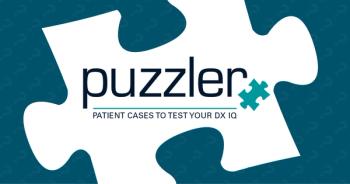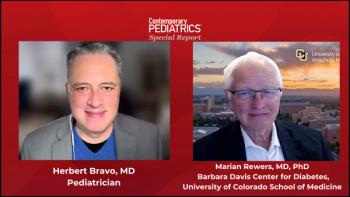
Study reveals distinct long COVID symptom patterns in young children
Infants and toddlers with infection history were more likely to have trouble sleeping, while preschool-aged children experienced daytime tiredness.
Distinguishable symptom patterns for long COVID (LC) were observed across infants and toddlers as well as preschool-aged children, according to new research published in JAMA Pediatrics that aimed to characterize which prolonged symptoms in early childhood are associated with SARS-CoV-2 infection.1
The observation of these symptoms in younger populations is important, the researchers said, because while previous studies have identified characteristic symptom patterns of long COVID in adults and children older than 5 years, characterization in early childhood "remains poor," they wrote.
The study, published May 27, 2025, was led by corresponding author Rachel S. Gross, MD, MS, Department of Pediatrics, Division of General Pediatrics, NYU Grossman School of Medicine, New York, New York.
"Studying LC in early childhood presents unique challenges due to rapid developmental changes and limited verbal communication, requiring caregivers to observe, identify, and interpret symptoms," wrote Gross and investigators.1,2 "These challenges have limited the understanding of symptom profiles in young children. Most LC studies that involve young children, including controlled studies, either do not report age-specific subgroup analyses, or young children are not well represented."1
To address knowledge gaps, the investigators sought to:
- Identify symptoms with the greatest difference in frequency comparing children with a history of COVID-19 to those without a history of COVID-19
- Identify differences in symptom type by the following age groups: Infants/toddlers (aged 0-2 years) vs preschool-aged children (aged 3-5 years)
- Derive indices that can be used in research studies to identify LC in early childhood
Early childhood long COVID symptom study design
In a multisite longitudinal design, the study enrolled frommore than 30 health care and community settings in the United States that featured infants, toddlers, and preschool-aged children with and without SARS-CoV-2 infection history. LC and 41 symptoms for infants and toddlers, as well as 75 symptoms for preschool-aged children, were the main outcomes and measures.
According to the investigative team, a research index was derived for each age group based on symptoms that are most associated with infection history. The index is then calculated by summing scores assigned to each prolonged symptom present. Higher scores indicated a greater magnitude of association with SARS-CoV-2 infection history.
Overall, there were 278 infants and toddlers (50% female) infected with SARS-CoV-2 and 194 uninfected, with a mean age of 12 months. There were 539 preschool-aged children (51% female) with a mean age of 48 months, of whom 399 were infected. In all, 41% of infants and toddlers with infection and 25% without infection had at least 1 prolonged symptom. For preschool-aged children, 45% of those with infection and 37% without infection had at least 1 prolonged symptom.
Long COVID symptom outcomes in early childhood
"Nine symptoms in infants/toddlers and 16 symptoms in preschool-age children were prolonged in at least 5% of infected young children," wrote the study authors. "The lower 95% confidence bound of the adjusted risk difference between infected and uninfected status exceeded zero for 5 of these symptoms in only infants/toddlers (trouble sleeping, fussiness, poor appetite, stuffy nose, wet cough), for daytime tiredness/sleepiness or low energy in only preschool-aged children, and for dry cough in both age groups."
Using a penalized logistic regression with the least absolute shrinkage and selection operator (LASSO) to select a reduced set of candidates that were most associated with infection, LASSO identified 5 symptoms in the infant/toddlers group and 2 symptoms in the preschool-aged children group that were most related to infection history.
Symptoms in infants/toddlers:
- Poor appetite (5 points)
- Trouble sleeping (3.5 points)
- Wet cough (3.5 points)
- Dry cough (3 points)
- Stuffy nose (0.5 points)
Symptoms in preschool-aged children:
- Daytime tiredness/sleepiness/low energy (6.5 points)
- Dry cough (3 points)
An optimal index threshold, or total score, identified by investigators was 4 points in the infant/toddler group and 3 points in the preschool-aged children group.
In all, 14% of infants and toddlers with infection and 3% without infection met or exceeded index thresholds, and were classified as having probable LC (index of at least 4 points), while 15% and 6% of preschool-aged children met the thresholds with or without infection, respectively, and were classified as having probable LC (index of at least 3 points). Study participants with higher indices often had poorer overall health, perceived delays in developmental milestones, and lower quality of life, according to the study investigators.
"The research indices may aid researchers in identifying young children with LC," concluded the investigators. "These findings support the concept that a one-size-fits-all approach to screening for LC across the lifespan is not possible and will likely need to be tailored for specific age groups," they wrote.
References:
1. Gross RS, Thaweethai T, Salisbury AL, et al. Characterizing long COVID symptoms during early childhood. JAMA Pediatr. Published online May 27, 2025. doi:10.1001/jamapediatrics.2025.1066
2. Scionti N, Zampini L, Marzocchi GM. The relationship between narrative skills and executive functions across childhood: a systematic review and meta-analysis. Children (Basel). 2023;10(8):1391. doi:10.3390/children10081391
Newsletter
Access practical, evidence-based guidance to support better care for our youngest patients. Join our email list for the latest clinical updates.






